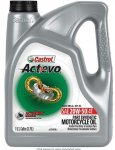Sidequestadventure
Finally made it
- Location
- SF Bay Area
Tell us what oil you use, why you chose it and your experience with it. Also, if you can tell us how many miles you've been running it for.
Himalayan calls for a 4T MA2.
Should you use standard motor oil?
- No. Standard motor oil synthetic or no may contain friction modifiers that can cause your clutch to slip.
Can you use full synthetic?
- Yes, However since the bike is new read people's reports below.
(A couple of people have made remarks in high heat, high use corner cases their clutch slipped but moving back to a semi-syn or dino cured the issue, but take this with a grain of salt)
What is MA/MA2 standard:
- These are 4T motorcycle wet clutch specification for manufacturers to follow: See details here
"But, 100% synthetic is more slippery or lighter weight than pure dino farts"
- 100% false, 100% urban legend. First ; Slippery is not a technical term for oil, it's a term used at the comsumer level that incorrectly describes actual properties of how oil sticks to surfaces and how it behaves as a fluid, which also are not mutually exclusive. However at a consumer level I'm sure it's a perfectly good term
- All oil manufacturers weight specifications are defined by a standard just because it's synthetic does not change the standard
- Synthetic by nature "sticks" to metals easier all while reducing the chance of shearing. (BTW sticks, and bonds are not correct terms here, but it paints a picture)
- This means it inherently does not "leak" or "slip" through seals more easily than dino farts, again perpetrated by Loc Ness Monster and you should never believe him, he's an asshole
- In fact many synthetics (mostly car high mileage versions I think) actually have an additive that slightly swell the surface of a seal to help close the gap.
- I know somebody is bound to want to argue about this but unless you can actually cite an article that was made in the last decade that wasn't written by a marketing company or some old man that doesn't understand composites then you have no ground.
Lastly, bearing grind tests are NOT a relevant way of testing oil properties. They are not accurate and do not in anyway reflect proper oil capabilites. This is due to the fact that almost all modern oils rely on additive to improve the quality of the oil, when you run the bearing grind test you are effectively only looking at 1 small part of what the oil is capable of doing. Even then you are looking at how the oil reacts to exposes metals that are shearing, not the oil shearing itself. These are not the same thing and under normal operating conditions.
*Note: I'd love to update this top list with oils that are verified to work well, any additional technical information, etc.
Himalayan calls for a 4T MA2.
Should you use standard motor oil?
- No. Standard motor oil synthetic or no may contain friction modifiers that can cause your clutch to slip.
Can you use full synthetic?
- Yes, However since the bike is new read people's reports below.
(A couple of people have made remarks in high heat, high use corner cases their clutch slipped but moving back to a semi-syn or dino cured the issue, but take this with a grain of salt)
What is MA/MA2 standard:
- These are 4T motorcycle wet clutch specification for manufacturers to follow: See details here
"But, 100% synthetic is more slippery or lighter weight than pure dino farts"
- 100% false, 100% urban legend. First ; Slippery is not a technical term for oil, it's a term used at the comsumer level that incorrectly describes actual properties of how oil sticks to surfaces and how it behaves as a fluid, which also are not mutually exclusive. However at a consumer level I'm sure it's a perfectly good term
- All oil manufacturers weight specifications are defined by a standard just because it's synthetic does not change the standard
- Synthetic by nature "sticks" to metals easier all while reducing the chance of shearing. (BTW sticks, and bonds are not correct terms here, but it paints a picture)
- This means it inherently does not "leak" or "slip" through seals more easily than dino farts, again perpetrated by Loc Ness Monster and you should never believe him, he's an asshole
- In fact many synthetics (mostly car high mileage versions I think) actually have an additive that slightly swell the surface of a seal to help close the gap.
- I know somebody is bound to want to argue about this but unless you can actually cite an article that was made in the last decade that wasn't written by a marketing company or some old man that doesn't understand composites then you have no ground.
Lastly, bearing grind tests are NOT a relevant way of testing oil properties. They are not accurate and do not in anyway reflect proper oil capabilites. This is due to the fact that almost all modern oils rely on additive to improve the quality of the oil, when you run the bearing grind test you are effectively only looking at 1 small part of what the oil is capable of doing. Even then you are looking at how the oil reacts to exposes metals that are shearing, not the oil shearing itself. These are not the same thing and under normal operating conditions.
*Note: I'd love to update this top list with oils that are verified to work well, any additional technical information, etc.
Attachments
-
77.4 KB Views: 42
Last edited:



